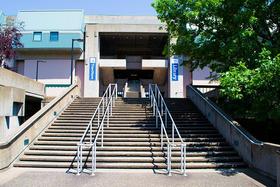The community college has traditionally been seen as a second-rate postsecondary education – the 13th grade, according to some high school seniors. However, numerous changes to the system and the economy have dramatically altered the ways these institutions are viewed today. Students are now using community colleges as viable stepping stones for four-year degrees or rewarding careers. Even students that have earned their baccalaureate are returning to community college to pursue practical career training. Statistics appear to be supporting the idea that community college has become an accepted mode of higher education used to help students reach their goals.
This video offers transfer advice for community college students.
Studies Support Community College Start
The Cavalier Daily reports on recent findings from the National Student Clearinghouse involving four-year completion rates for community college students. The results showed the majority of students who transferred from a community college to a four-year school finished their baccalaureate degree. This negates previous concerns that community college students were less apt to succeed in their pursuit of four-year degrees.
According to Inside Higher Ed, the National Student Clearinghouse found that 60 percent of community college students who transferred to four-year schools earned a bachelor's degree within those four years. Students that earned their associate degree prior to transfer performed even better, with 71 percent earning a four-year degree during that same time frame. Additional community college grads remained enrolled in their four-year institution after four years, indicating they were still on track for a completed degree program.
“It shows that community colleges have an important role to play in helping students receive an advanced postsecondary degree,” Paula Newbaker, spokesperson for the clearinghouse, told the Cavalier Daily. “It is also an encouraging finding for students who would like to transfer from two-year to four-year institutions,” Newbaker added.
There is a catch in these statistics, however. While U.S. News and World Report cite statistics from the College Board showing around half of all community college students plan to transfer to a four-year school, only 20 percent actually do so. Of the minority that does move to four-year institutions, the majority actually graduate from those institutions. It is difficult to predict what those statistics would look like if more community college students completed their transfers. Still, the statistics do indicate that beginning a postsecondary academic career at a community college may pack a more potent punch than first thought.
This video offers some ideas about where GPAs fit into the transfer process.
Benefits of Beginning at Community College
ABC News reports that more students are finding community college to be a beneficial first step on the road to a four-year degree. As the economy has slowed in recent years, high school graduates are finding community college to be a viable and affordable option for higher education. And increasing demand is fueling a new attitude toward two-year schools, from employers to high school counselors and the students themselves.
“When I was growing up, going to college was defined as finding a four-year school with a nationally ranked football team,” Kim Mai, coordinator for Minneapolis’s Public School’s AchieveMpls Career and College Centers, told ABC. “There definitely was a stigma [attached to community colleges]. But not now.”
Some states, including California and Florida, are using community colleges as a feeder program for four-year schools in the state. Transfer agreements between community colleges and four-year schools have made it much easier for students to begin at community college with the expectation that all credits earned will transfer to their four-year degree program. In California, nearly 60 percent of the students who graduate from the California State University system began their postsecondary studies at a state community college.
One of the biggest attractions to the community college path is the cost of education. According to CNN Money, the average tuition for a two-year school during the 2010-2011 school year was $2,713. The average cost of a four-year institution that same year was $7,605. The lower tuition costs do not necessarily translate to lower-paying jobs after college either. Many community college graduates who earn associate degrees in fields like health care or IT systems may earn average annual salaries of $50,000 or more.
Heading Back to School
Another interesting trend sweeping the nation is the number of students with a bachelor's degree who are heading back to community college for additional training. CNN Money reports that there is plenty of anecdotal evidence to support the idea that more baccalaureate holders are heading to community college for additional training in their current field or education to prepare them for a whole new career. From high school graduates to baby boomers, community colleges are seeing a significant increase in their student bodies.
In some cases, new community college students found their choice of baccalaureate degrees did not give them the leg up on the competitive marketplace they had hoped. Degrees in sociology or history simply weren’t sufficient to land a well-paying job without an advanced degree. These individuals have discovered that in two years or less, they can train for a more practical career choice, such as nursing or IT systems. Others have found that they need additional, less expensive education to land the job necessary to pay off the high debt balances their four-year degrees brought.
No matter what the reason for heading to community college, the growing popularity of the choice has lent credibility to the idea of a two-year degree. With affordability and a wealth of transfer and career options now available, more students are turning to the community college path to pursue a four-year degree or a lucrative profession down the road.
Questions? Contact us on Facebook. @communitycollegereview












